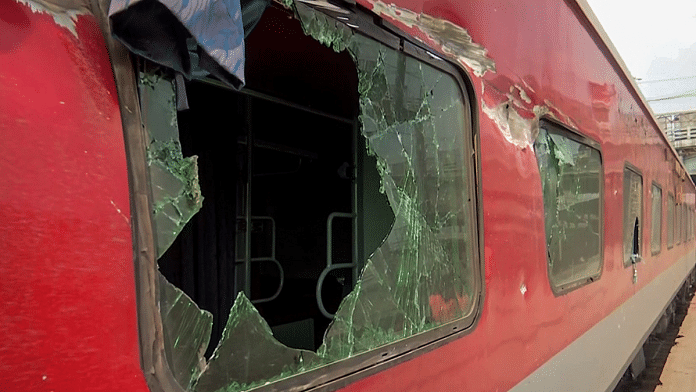New Delhi: While an initial internal probe by the Indian Railways has found that Friday’s Odisha train accident was likely caused by the failure of the signalling system, officials within the railway board had warned about “serious flaws in the system” and raised concerns on failure of interlocking in February and sought immediate action, according to a letter seen by ThePrint.
As many as 275 people were killed and many injured in the collision involving three trains in Odisha’s Balasore district in what is India’s worst railway accident since the 1995 Firozabad rail tragedy that had over 350 fatalities.
The accident involved Shalimar-Chennai Coromandel Express and SMVB – HWH Superfast Express, both of which derailed near the Bahanaga Bazar railway station in the Balasore district of Odisha at around 6.55 pm. A goods train was also involved in the accident as some of the coaches of the Coromandel Express, which was heading to Chennai, hit its wagons after getting derailed.
In a letter dated 9 February reviewed by ThePrint, the principal chief operating manager of South Western Railway zone raised concerns of signal failure of an express train with the subject “Serious unsafe incident happened at Hosadurga Road station of Birur-Chikjajur section of Mysore division on 08.02.2023, involving Train no. 12649 Sampark Kranti Express, leading to condition for averted head-on collision with a down goods train (sic).”
He wrote,“…It was strange that the route of dispatch was set and (the) starter was taken off, PLCT was given, but point no: 65A automatically set in wrong direction (Down direction).” A PLCT refers to something called a Paper Line Clear Ticket which is used in special circumstances and allows a train to enter a block section.
He added, “due to the alertness of the loco pilot, the train was stopped before entering the wrong line (Down line) and averted a major disaster…”
He said the incident indicates that there are “serious flaws in the system where the route of dispatch gets altered after a train starts on signals with correct appearance of route in the SMS panel. This contravenes the essence and basic principles of interlocking.”
He also warned if the signal maintenance system was not monitored and corrected immediately, it could lead to “re-occurrence and serious accidents”.
“Anything of this nature happening in one zone raises eyebrows everywhere,” a senior railway official told ThePrint, requesting anonymity.
Responding to ThePrint via WhatsApp, the ministry said Saturday, “The reason for yesterday’s accident is still to be established.”
Also read: Opposition offers condolences for Odisha train tragedy, demands rail minister Vaishnaw’s resignation
Neglect of rail safety, serious issues flagged
According to multiple officials present at a ‘Chintan Shivir’, or a brainstorming session headed by Railway Minister Ashwini Vaishnav Friday just hours before the accident, presentations by various zones on railway safety were skipped.
“Only one zone was allowed to make the presentation on safety…while the discussion on the launch of Vande Bharat trains and increasing revenue were allowed,” a senior official told ThePrint on the condition of anonymity.
According to another official, alarms over recent derailments of goods trains were also raised at the meeting. “There have been alarming derailments of goods trains in the recent months where loco pilots died and wagons were completely destroyed. This should have raised alarms,” the second official said.
Lack of manpower, ailing infrastructure
There is a sheer dearth of gangmen, the foot soldiers of the Indian Railways who inspect tracks every day, while station masters are working overtime.
The post of a station master is crucial in maintaining railway safety. “They are being made to work 12 hour shifts. Their role is one of the most crucial in maintaining safety. The stationmaster has to keep tabs on everything from the wheels to even the sound the train makes as it passes through, to detect any irregularities,” a senior railway ministry official said.
Officials in the railway ministry said the low cost anti-collision system KAVACH has also not been implemented across zones yet.
Responding to a plea filed by the Times of India under the Right to Information Act this April, the ministry said that a majority of the 39 railway zones and production units lack the required human resource.
More than 3.11 lakh posts out of 14,75,623 Group C posts (traffic assistant, good guard, junior and senior timekeeper, junior and senior clerk-cum-typist, and station master) and 3,018 out of the sanctioned 18,881 gazetted cadre positions (senior officials) are vacant in various departments of the Indian Railways.
(Edited by Smriti Sinha)
Also read: Anti-collision tech, Vande Bharat — most of minister Vaishnaw’s tweets promote rail modernisation



